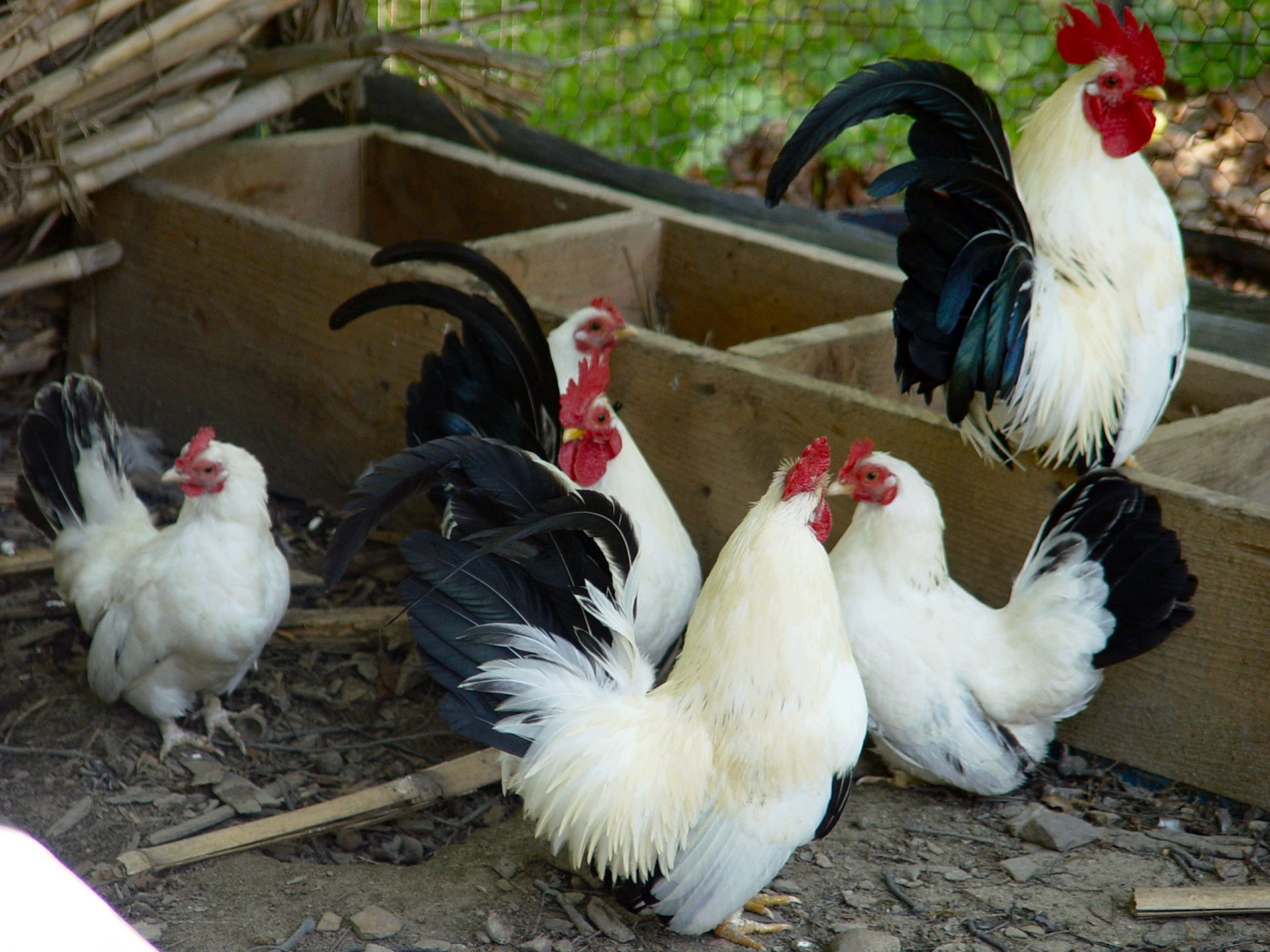Coop Care 101: How To Raise Happy And Healthy Backyard Chickens


Backyards have entirely gone to birds now – yep, it’s all about learning how to raise chickens in your backyard!
Everyone – from city slickers to A-list celebrities (we are looking at you, Lady Gaga, Kylie Jenner, and Jennifer Garner) – is raising hens in their backyards. And that too in the name of having farm-fresh eggs at home!
Before you start your coop journey, however, you must consider what kind of coops you are going to purchase now. Moreover, you can also choose to go DIY and check out some nice coop ideas. At the same time, you can also check out the different accessories you will need for decorating your coop.
In addition to finding out about coops, you need to do some basic homework about the different breeds of chickens.
To make things easier for you, here’s how to raise chickens safely in your backyard – of course, you will need more research and guidance. But this is the start you need – stay tuned!
But First, Do You Have Enough Room For Raising Chickens?
Before, we can discuss how to raise chickens, let’s address something even more important – do you have enough room to raise chickens?
The shortest answer here is – YES!
After all, chickens are small birds and require relatively less space. Ideally, you should allocate 4 square feet inside the nesting coop or henhouse for every chicken and 10 square feet for every chicken in their covered area.
So, for a flock comprising of 6 chickens, you will need a 6-by-4 nesting coop along with a 6-by-10 run.
Having said, you must also understand that the amount of space is hardly a dealbreaker for backyard chickens. Rather, the big quaeion here is if these chickens are allowed in your locality.
As a result, before you start raising chickens in your backyard, it is best to get in touch with your local municipality or homeowners’ association to confirm whether it is allowed or not.
Interestingly, several urban and suburban areas have limitations on the total number of roosters or hens that you can keep at home.
How To Raise Happy And Healthy Backyard Chickens?
Raising backyard chickens can bring absolute joy, and our feathered friends thrive best when cared for in all aspects. However, coop care can come with its fair share of challenges, like raising other animal types.
Let’s jump right into some top tips to help you raise the happiest, healthiest backyard chickens possible.
1. Feed Them Well:
Of course you need to come up with a balanced diet for your backyard chickens. A good diet will not only improve your chicken’s overall health but also enhance their productivity. So, what does a balanced diet for a chicken include?
Commercial Feed:
Commercial feed is formulated to provide a balanced diet. Various types of feed are available, catering to different breeds, sizes, and ages. Bigger and older layers and broilers would have different nutritional needs from smaller, younger pheasant chicks.
Fresh Food:
While commercial feed should comprise the bulk of their diet, supplementing with fresh fruits, vegetables, and grains can provide additional nutrients and variety.
Foods like apples, carrots, and oats are great choices. However, avoid giving them anything salty, sugary, or processed.
Grit:
Grit (small rocks or coarse sand) helps their gizzards grind up food. Allow them access to a dirt area or provide them with commercial grit.
Nutritional Components:
When planning your flock’s diet, ensure it has a good balance of proteins, carbohydrates, fats, vitamins, and minerals.
Protein in poultry feed lists includes essential amino acids chickens need for growth. Chickens’ bodies can produce their amino acids, but the rest must come from their food.
Carbohydrates from grains like corn and wheat provide energy. They include starches for quick energy and cellulose for gut health.
Dietary fats, such as animal fats and vegetable oils, provide a high-energy, calorie-rich component to bird diets, enhancing feed quality and aiding in vitamin absorption.
Vitamins help animals turn food into energy and have specific functions like supporting vision and bone health. Chickens get these vitamins from their feed. It’s also helpful to include mixed vitamin supplements in their diet.
Minerals are found in feed’s “ash content,” which is important for chicken health, including bone and eggshell formation. Grains lack sufficient minerals, so supplements like calcium and digestible phosphorus are added to poultry diets.
Well-fed chickens are healthy and productive. A balanced diet gives them a long and happy life.
| Important Warning: Avoid overfeeding. This can lead to obesity and other health issues in chickens. Feed them within the recommended proportions for their breed and size. |
2. Keep Them Hydrated:
Water is vital in chickens’ digestion, egg production, and temperature regulation. Here’s what they need for hydration:
Access to Clean Water:
On average, a chicken drinks approximately 500 ml to 1L of water daily, but this can increase in hot weather or during periods of high egg production.
When choosing waterers, choose one that suits your flock size and coop setup. The waterer should be easy to clean to prevent the growth of algae and bacteria.
Shade and Cool Water:
Chickens can easily get overheated. In hot weather, provide shade and consider adding ice cubes to their water to keep it cool.
| Keep in Mind: Always watch out for signs of dehydration: lethargy, panting, and loss of appetite. If you notice these signs, provide electrolytes in their water to help them rehydrate. |
Handle Them Gently:
Chickens need to be checked regularly, and so it pays to get them used to being handled. Make sure they are comfortable and safe when being handled. Approach slowly and calmly, and avoid making any sudden movements.
Pick them up gently but firmly grasp them around the body, supporting their feet. Never pick up a chicken by the wings or legs, as this can cause injury.
Regular Health Checks:
Handling allows you to proactively look for signs of illness or parasites before they become serious problems. Here are the steps you should take when doing regular checks.
Examine the Feathers:
Healthy feathers should be clean and free from parasites. Look for signs of mites or lice, which can cause discomfort and lead to other health issues.
Check the Eyes and Nostrils:
The eyes should be clear and bright, and the nostrils should be clean with no signs of discharge. Any cloudiness, swelling, or discharge could indicate an infection.
Look at the Comb and Wattles:
These should be bright red and free from any sores or blisters. Pale or discolored combs and wattles can be a sign of anemia or other illnesses.
Feel the Body:
Feel the chicken’s body for any lumps, bumps, or abnormalities. This can help detect tumors or other internal issues.
Observe Behavior:
Watch your chickens for any changes in behavior, such as decreased activity, loss of appetite, or changes in egg production. These can be early signs of illness.
Handling your chickens should be a positive experience for both of you. Handle them with care and respect; they’ll reward you with their trust and plenty of fresh eggs.
4. Provide Adequate Space:
Chickens need room to roam, peck, and scratch. Adequate space also allows for healthy socialization, preventing harmful interactions inside the coop.
Larger breeds need more space than smaller ones. For example, a large breed like a Jersey Giant will need more space than a small breed like a Bantam.
Free-range chickens will need less coop space because they can roam your yard during the day. But if your chickens are confined to a coop, each chicken should have at least 10 square feet of outdoor space or at least 4 square feet per bird. (More space is always better.)
Here’s a simple table to help you calculate your flock’s space requirements:
| Number of Chickens | Minimum Outdoor Space (in square feet) | Minimum Coop Space (in square feet) |
| 5 | 50 | 20 |
| 10 | 100 | 40 |
| 20 | 200 | 80 |
These are just minimum requirements, but the more space you have, the better. Also, consider the space needed for nesting boxes and roosting bars.
Each chicken should have at least 1 square foot of nesting box space and about 8-10 inches of roosting bar space.
5. Keep the Coop Safe:
The coop is their home, and it should be a place where they feel safe from predators and extreme weather conditions. Some key factors to consider when building a safe coop:
Predator-Proofing:
Predators like foxes, raccoons, and dogs can target chickens. Your coop should be sturdy and secure, with a lockable door and no gaps or holes where predators could enter. Bury the edges of your coop at least a foot deep into the ground to prevent digging predators.
Ventilation:
Poor ventilation can lead to respiratory problems and a buildup of harmful ammonia from droppings. Ensure your coop has (mesh, predator-proof) vents or windows that allow fresh air.
Insulation:
Depending on your climate, your coop may need to be insulated to protect your chickens from extreme temperatures. Chickens can handle cold quite well but are susceptible to heat stress. Adding shade ensures your coop doesn’t become a heat trap.
| Additional Tip: If your hens are on a laying cycle, they need 14-16 hours of light daily. Natural light is best, but artificial lighting should be added if necessary. |
6. Keep the Coop Clean:
A dirty coop can become a breeding ground for parasites and disease-causing bacteria, which can quickly spread among your flock.
Here’s how to keep your coop clean:
Generally, you should aim to do a full clean-out every 1-2 weeks. This involves removing all bedding and droppings and replacing them with fresh bedding.
Then, at least once or twice a year, you should thoroughly clean your coop. This involves removing bedding and droppings and scrubbing the coop with a chicken-safe disinfectant.
Chicken droppings can build up quickly and are a major source of ammonia, which can cause respiratory issues in chickens. Use a droppings board under the roosting bars, which can be cleaned daily.
Here’s a sample cleaning schedule you can follow:
| Task | Frequency |
| Full clean-out (remove bedding and droppings) | Every 1-2 weeks |
| Deep clean (scrub with disinfectant) | 1-2 times a year |
| Clean droppings board | Daily |
Keep on top of your cleaning schedule to prevent diseases and ensure your chickens are comfortable and healthy.
7. Give Them a Dust Bath:
Dust baths are part of a chicken’s natural behavior. This helps them keep their feathers clean and free from parasites.
Here’s how you can set up a dust bath area:
Choose a Location:
The dust bath area should be dry and sunny. Chickens prefer to dust and bathe in the sun. A dry location will prevent the dust from turning into mud.
Prepare the Dust Bath:
You can use a large, shallow container or dig a hole in the ground. The dust bath should be big enough for your chickens to roll around.
Fill It With Dusting Material:
You can mix sand, soil, and diatomaceous earth. The sand and soil provide the dust, while the diatomaceous earth can help kill parasites.
Maintain the Dust Bath:
Keep the dust bath dry and clean. If it gets wet, you’ll need to replace the dusting material.
Watching your chickens enjoy a dust bath can be quite entertaining. It’s also a simple and effective way to maintain a stress-free coop.
Final Takeaway: Keep Your Chickens Safe, Well-Fed and Hydrated!
Caring for chickens is all about understanding their needs, providing a safe and clean environment, and fostering their natural behaviors. With a little care and attention, you’ll have a flock of feathered friends who are a joy to watch and a source of fresh eggs.
Don’t forget to share your coop stories with us in the comments below.









All Comments
Cathrine Ipsa
18 June, 2024
What a remarkable article! The way you’ve tackled the topic with such precision and depth is commendable. Readers are sure to gain a great deal from the wealth of knowledge and practical insights you’ve shared. Your profound understanding of the subject shines through every part of the piece. I'm eager to see more of your exceptional work. Thank you for offering your expertise and providing us with such enlightening and comprehensive content.
Reply